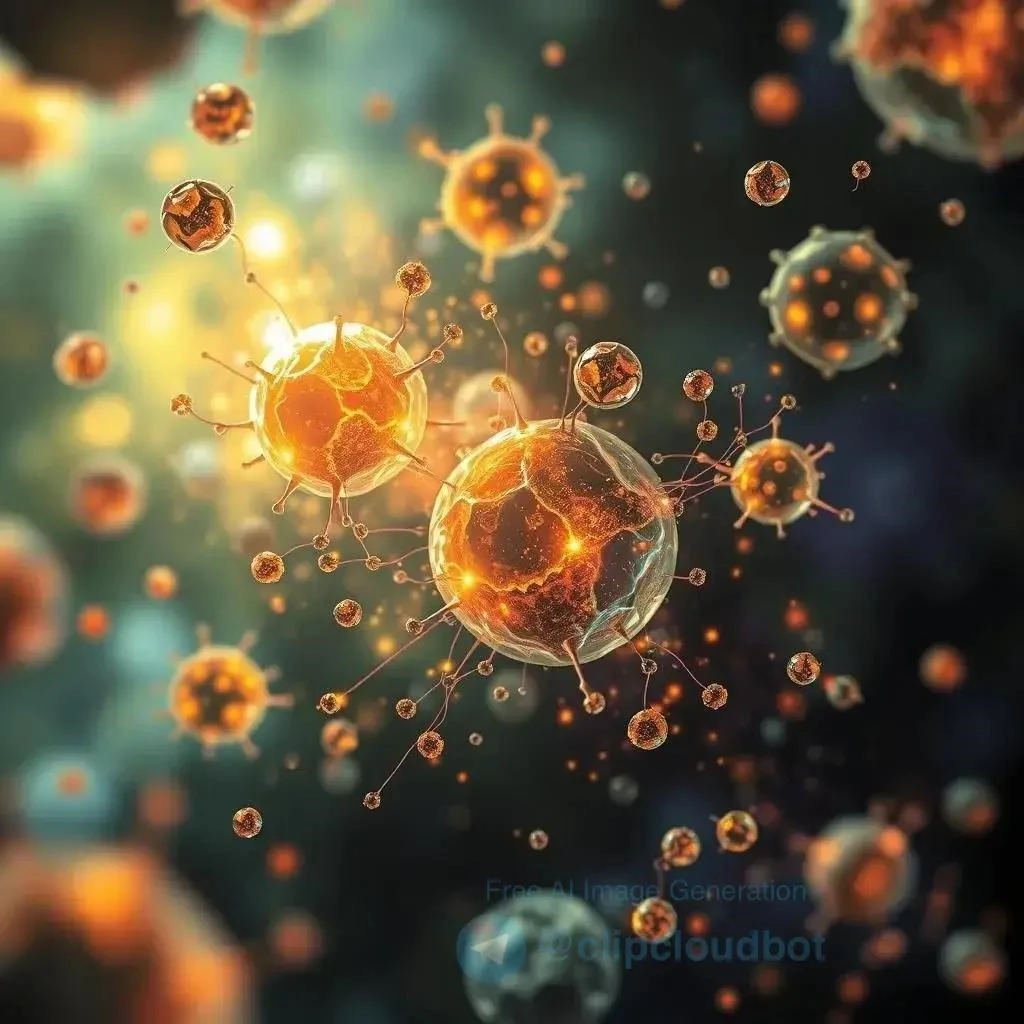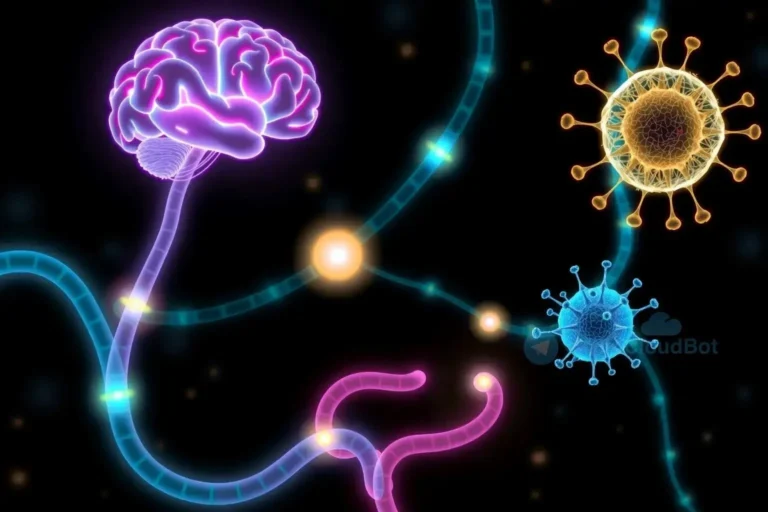Understanding Cellular Aging: The Power of Autophagy and Senolytic Approaches
Understanding Cellular Aging
Cellular aging, a complex process, involves the gradual decline of cellular function and integrity over time․ This decline is driven by a multitude of factors, including accumulated DNA damage, oxidative stress, and telomere shortening․ These processes contribute to cellular dysfunction, leading to tissue damage and age-related diseases․ Understanding these fundamental mechanisms is crucial for developing effective anti-aging interventions․ As cells age, they become less efficient at repairing themselves and performing their designated roles․ This deterioration is a hallmark of aging and contributes to the overall decline in organismal health․
The Power of Autophagy
Autophagy, a cellular self-cleaning process, plays a pivotal role in maintaining cellular health and combating the effects of aging․ Derived from the Greek words “auto” (self) and “phagein” (to eat), autophagy literally means “self-eating․” This essential process involves the breakdown and recycling of damaged cellular components, including misfolded proteins, dysfunctional organelles, and invading pathogens․ Think of it as the cell’s internal recycling system, constantly working to clear out debris and maintain optimal function․
The process of autophagy is remarkably intricate, involving several key steps․ It begins with the formation of a double-membraned structure called the autophagosome, which engulfs the targeted cellular waste․ This autophagosome then fuses with a lysosome, an organelle containing digestive enzymes․ Inside the lysosome, the engulfed contents are broken down into smaller molecules, such as amino acids and fatty acids, which are then released back into the cytoplasm for reuse․ This recycling process provides the cell with building blocks for new components and energy production, promoting cellular rejuvenation and resilience․
The importance of autophagy in anti-aging lies in its ability to counteract several age-related cellular changes․ By removing damaged proteins and organelles, autophagy helps to prevent the accumulation of cellular debris that can disrupt normal cellular function and contribute to age-related diseases․ Furthermore, autophagy enhances cellular stress resistance, allowing cells to better cope with environmental challenges and maintain their functionality over time․
Boosting autophagy through lifestyle interventions, such as caloric restriction and intermittent fasting, has shown promise in promoting longevity and improving overall health․ These dietary approaches activate cellular pathways that stimulate autophagy, leading to enhanced cellular cleaning and rejuvenation․ In addition, research is exploring the potential of pharmacological interventions that can specifically target and enhance autophagy, offering exciting possibilities for future anti-aging therapies․ Harnessing the power of autophagy holds significant potential for mitigating age-related decline and promoting healthy aging․
The decline in autophagic activity with age is considered a contributing factor to the accumulation of cellular damage and the development of age-related diseases․ Maintaining robust autophagy throughout life is crucial for preserving cellular health and promoting longevity․ This dynamic process acts as a cellular guardian, constantly working to maintain cellular integrity and combat the detrimental effects of aging․
Targeting Senescent Cells: The Senolytic Approach
Cellular senescence, a state of irreversible cell cycle arrest, is another key contributor to the aging process․ Senescent cells, often referred to as “zombie cells,” accumulate with age and release a cocktail of inflammatory molecules, damaging surrounding tissues and contributing to age-related diseases․ Unlike healthy cells that undergo programmed cell death (apoptosis), senescent cells persist, disrupting tissue homeostasis and fueling chronic inflammation․
The senolytic approach to anti-aging focuses on selectively eliminating these harmful senescent cells․ Senolytics are a class of drugs that specifically target and destroy senescent cells, offering a promising strategy for combating age-related decline․ By clearing out these cellular “zombies,” senolytics aim to reduce inflammation, improve tissue function, and extend healthy lifespan․
Several senolytic compounds are currently under investigation, showing promising results in preclinical and early clinical trials․ These compounds work through various mechanisms, including targeting specific pathways involved in senescent cell survival․ For instance, some senolytics inhibit anti-apoptotic proteins that protect senescent cells from programmed cell death, effectively triggering their elimination․
The potential benefits of senolytics extend across a range of age-related conditions, from osteoarthritis and cardiovascular disease to neurodegenerative disorders․ By reducing the burden of senescent cells, these therapies hold promise for alleviating age-related inflammation and improving overall healthspan․ However, further research is needed to fully understand the long-term effects and optimize the clinical application of senolytic therapies․
The emergence of senolytics represents a significant advance in the field of anti-aging research․ Targeting and eliminating senescent cells offers a targeted approach to combating age-related decline and promoting healthy aging․ As research continues to unravel the complex interplay between senescent cells and aging, senolytics hold the potential to revolutionize how we approach age-related diseases and extend healthy lifespan․
The selective removal of these detrimental cells offers a powerful strategy to mitigate the impact of aging and improve overall health․ This targeted approach represents a significant advancement in anti-aging research, offering hope for a healthier and more vibrant future․
Synergistic Effects and Future Directions
The combination of autophagy induction and senolytic therapies represents a promising synergistic approach to combating cellular aging․ While autophagy enhances cellular cleaning and recycling, senolytics eliminate harmful senescent cells, creating a powerful dual-pronged attack against age-related decline․ This combined approach holds the potential to amplify the benefits of each individual strategy and further promote healthy aging․
Research suggests that autophagy and senolytics may work in concert to enhance cellular rejuvenation․ For instance, autophagy can help to clear out cellular debris generated by the removal of senescent cells, preventing the accumulation of potentially harmful byproducts․ Furthermore, some evidence suggests that senolytics can even enhance autophagy, creating a positive feedback loop that further promotes cellular health․
The future of anti-aging research lies in developing targeted and personalized interventions that address the complex interplay of cellular processes involved in aging․ This includes further investigation into the synergistic effects of combining different anti-aging strategies, such as autophagy induction and senolytic therapies․ Precision medicine approaches, tailored to individual genetic and lifestyle factors, hold great promise for optimizing the effectiveness of anti-aging interventions․
Beyond autophagy and senolytics, other promising areas of anti-aging research include interventions targeting telomere shortening, mitochondrial dysfunction, and epigenetic changes․ A comprehensive approach that addresses multiple hallmarks of aging is likely to yield the most significant benefits in promoting longevity and extending healthy lifespan․
As our understanding of the cellular and molecular mechanisms of aging continues to deepen, the development of innovative anti-aging therapies is rapidly advancing․ The combination of lifestyle interventions, targeted therapies like senolytics, and future breakthroughs holds immense potential for revolutionizing how we approach aging and promoting a healthier, more vibrant future for all․
The ongoing research and development in these fields offer exciting possibilities for extending healthspan and improving the quality of life for generations to come․ The pursuit of healthy aging is a continuous journey, and the combined efforts of scientific exploration and lifestyle modifications promise a brighter future for aging individuals․





